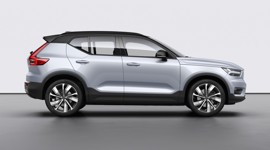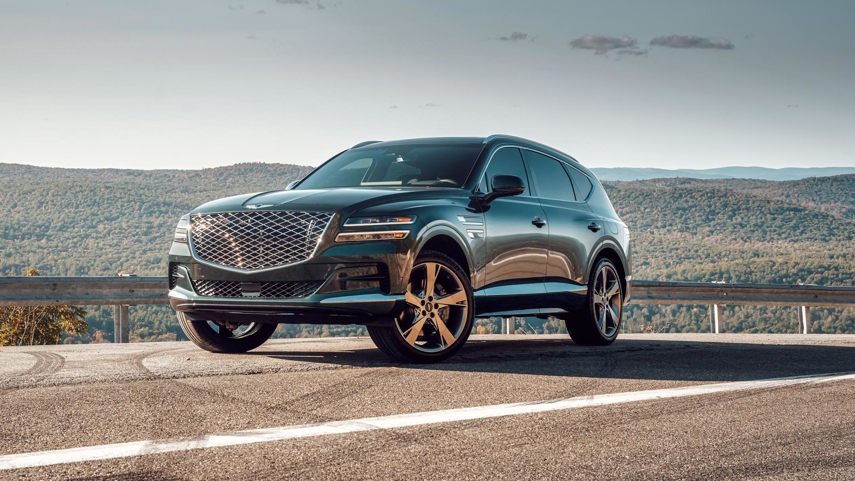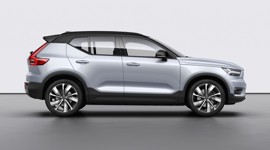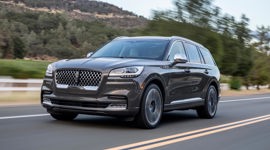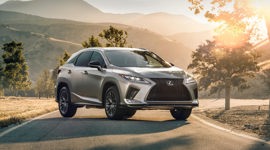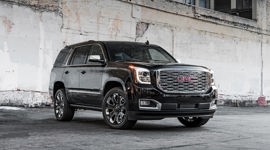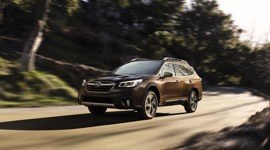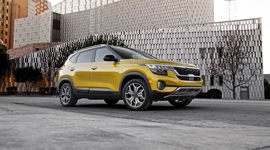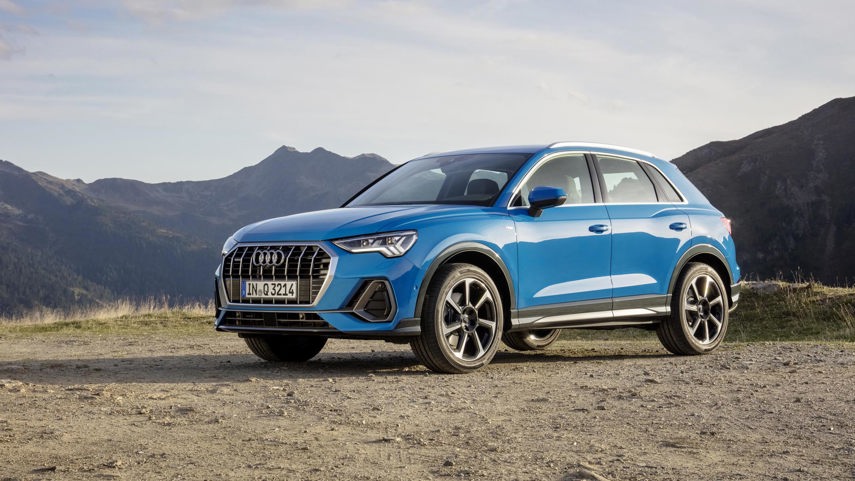The Canadian SUV and crossover market is packed to the brim with an endless supply of vehicles to suit every need, lifestyle, and budget. We know it can be overwhelming to sort through all your options, so we have leaned on our expert reviewers to help highlight the best ones in multiple segments.
More than 20 automotive experts from all over the country considered every single SUV and crossover available to buy and voted on the best ones to help pick the winners for our 2021 AutoTrader.ca Awards, and even though some of these vehicles didn’t win awards, they were good enough to be considered among the best.
Here are the best SUVs and crossovers in each segment, which were all finalists for AutoTrader.ca Awards in 2021.
Best Subcompact SUVs
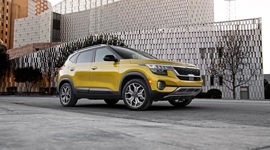
Kia Seltos
The handsome Seltos is Kia’s first subcompact crossover model, and it’s a good illustration of why this South Korean company is on a roll: it’s a good value; it has useful space in a well-done cabin; and it’s pleasant to drive, with accurate steering and an automatic continuously variable transmission (CVT) so good you won’t notice it’s there.
In most trims, performance is modest from a 146-hp 2.0L four-cylinder engine; if you want more power, choose the top SX Turbo trim, powered by a 175-hp 1.6L turbo motor that comes with a dual-clutch automatic. While the Turbo is quick and has sharper handling, we think the base powertrain feels better sorted overall.
Seltos LX pricing starts at $23,095 with front-wheel drive (FWD) and the CVT, and all-wheel drive (AWD) adds $2,000 to that base trim. EX Premium ($30,695) gets a full suite of safety and high-tech kit, and the sporty SX Turbo comes in at $32,695, boasting an upgraded stereo and a head-up display.
Read our review of the 2021 Kia Seltos.
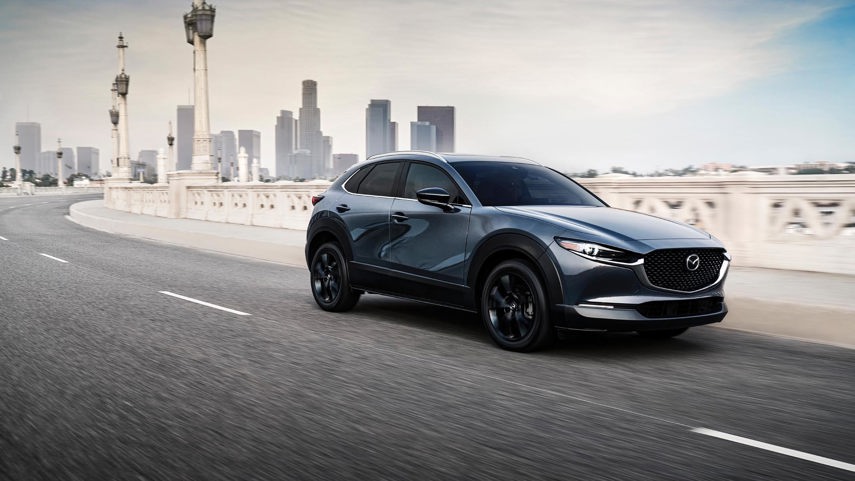
Mazda CX-30
Introduced in 2020, the CX-30 is Mazda’s second entry in the subcompact CUV class. It’s based on the Mazda3 hatchback, so it shares that car’s driver-focused feel and near-luxury interior quality. Practicality-wise, this is a big improvement on the tiny (and similarly named) CX-3, putting Mazda in the meat of the market for little CUVs even though it’s smaller inside than some competitors.
Nothing else in the segment offers as much variety under the hood: there’s a base 155-hp 2.0L four-cylinder; a 2.5L with 186 hp for mid- and top-level trims; and an optional 2.5L turbo (250 hp) that lends the CX-30 performance to match pricier luxury CUVs.
The CX-30 is the enthusiast’s choice among small crossovers: if you like the firm ride, you’ll probably love the way this little utility handles. Pricing ranges from $24,550 (GX FWD) to $36,250 (GT AWD Turbo).
Read our review of the 2021 Mazda CX-30.
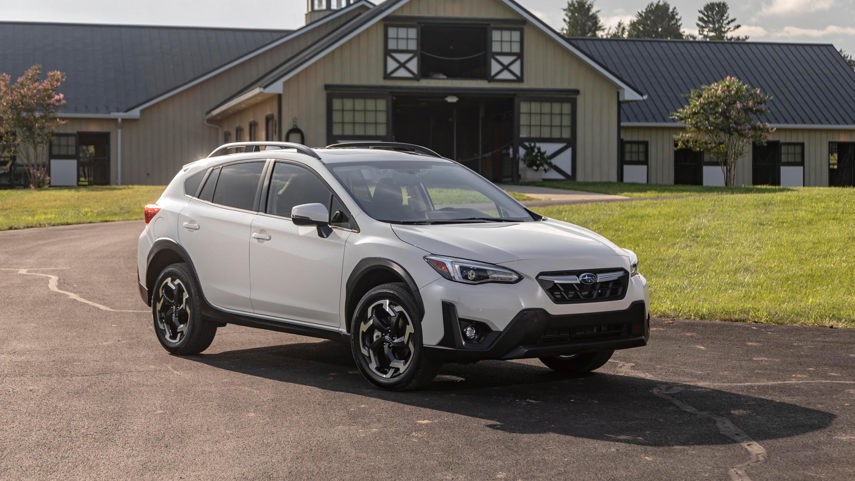
Subaru Crosstrek
The Subaru Crosstrek is one of the original subcompact crossovers, having first appeared in 2013 as an extension of the Impreza line. As a result, it wears its car-based heart on its sleeve more than most small utilities, and yet we think it’s better-looking than the Impreza. The Crosstrek benefits from Subaru’s long AWD experience. Generous ground clearance makes it almost unbeatable in deep snow, and it’s also capable in light off-roading situations.
For 2021, Subaru sweetened the Crosstrek’s appeal with a new 2.5L engine (182 hp) that corrects the underwhelming performance that was one of its few flaws. If you like shifting your own gears, the base 152-hp motor comes with a six-speed stick-shift – one of the few crossovers you can still get that way. The Crosstrek emphasizes comfort and fuel economy over sportiness, but it’s an easy vehicle to live with.
Pricing goes from $23,795 to $34,495, and most trims are standard with Subaru’s well-done EyeSight camera-based safety system.
Read our review of the 2021 Subaru Crosstrek.
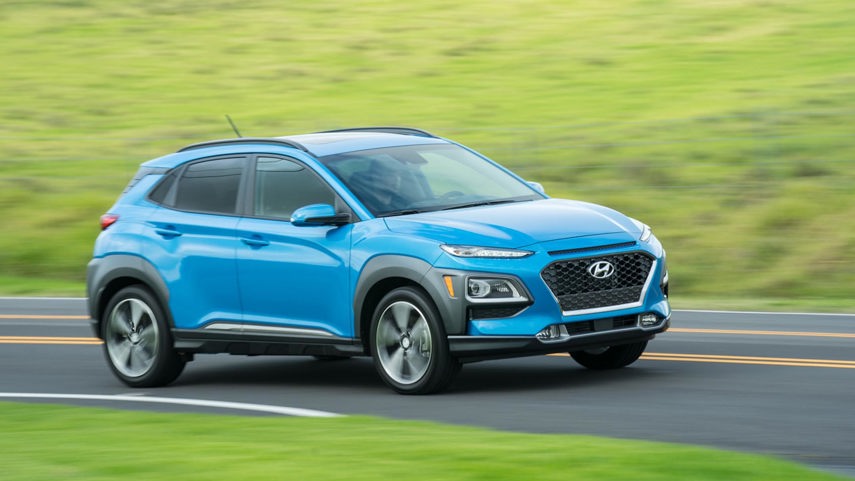
Hyundai Kona
If there’s an SUV or crossover segment to compete in, Hyundai’s there, and the Kona is one of its highest-profile models despite also being among the most affordable. A lot of that is down to its styling, which you’ll love or hate, but you have to admit it has a lot of personality. The Kona is compact inside, for sure, but it’s plenty practical as a city runabout thanks to dimensions like those of a compact hatchback.
Underneath, a 2.0L engine provides a modest 147 hp in lower-end trims, and a 1.6L turbo lends 175 hp to the Kona’s pricier models. The turbo version (labelled 1.6T) is more fun – even in the snow – but the base motor comes with a nicely tuned suspension and agile handling.
Value is strong, with standard heated seats at $21,299 in the FWD Essential model; the $23,049 AWD Preferred trim adds passive keyless and blind spot warning. The top Ultimate trim is $32,299, complete with the turbo motor and more safety kit.
Read our review of the 2021 Hyundai Kona.
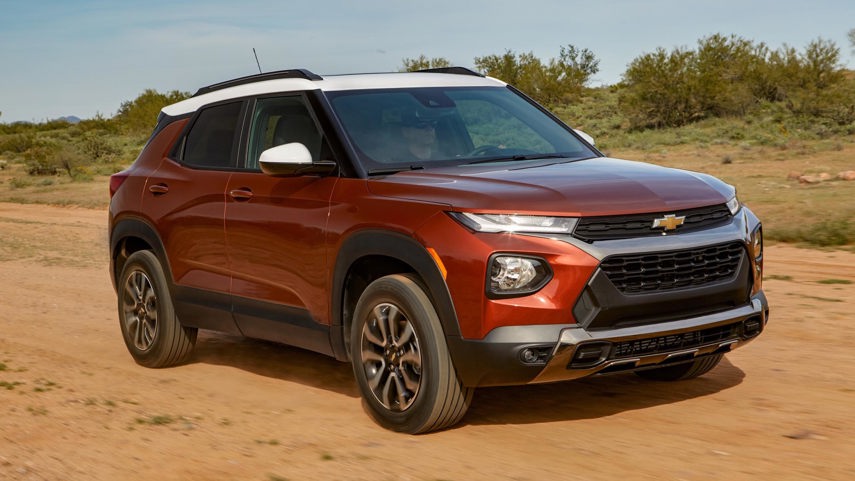
Chevrolet Trailblazer
The 2021 Chevrolet Trailblazer is an all-new subcompact crossover that looks set to succeed in this fast-growing segment: it’s eye-catching without being weird, and it’s priced to appeal to entry-level buyers. Our reviewers like the Trailblazer for an interior that’s roomier than expected for its size, along with good fuel economy and nimble handling suited to city driving.
Chevrolet offers two engines in the Trailblazer, both of them turbocharged three-cylinders. The entry-grade motor is a 1.2L with 137 hp, and upper trims get a 1.3L version that bumps output to 155 hp. You can get either with front-wheel drive and a CVT or all-wheel drive and a nine-speed transmission.
The Trailblazer LS’s $23,898 price includes air conditioning (A/C), a seven-inch touchscreen, and some safety assists. For just over $30,000 you get heated mirrors and front seats, and a power driver’s seat.
Read our review of the 2021 Chevrolet Trailblazer.
Best 2-Row/Compact SUVs
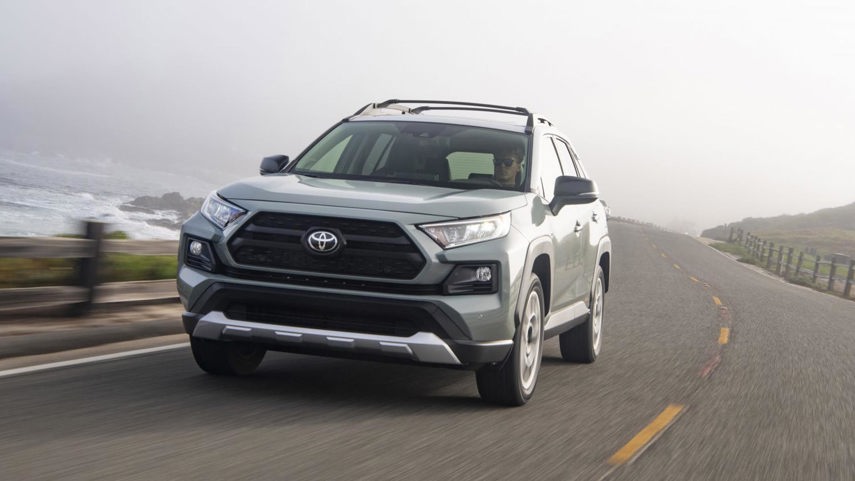
Toyota RAV4
It’s never much of a surprise when a Toyota product wins a "best-of" award, especially when the vehicle in question is the RAV4 compact SUV, a made-in-Canada mainstay of the country’s new-vehicle landscape. RAV4 buyers get a roomy, comfortable, and practical interior and a range of trims to satisfy at all price points.
Toyota leans heavily on its hybrid expertise here, offering both conventional and plug-in hybrid (Prime) variants that boast great fuel economy and a smooth, quiet drive. All RAV4 models use a 2.5L four-cylinder engine for 203 hp on its own; 219 hp in the hybrid; and 302 hp in the Prime.
Pricing goes from $28,590 for the FWD LE to $43,350 for a Hybrid Limited AWD model and $44,990 for the plug-in Prime. Most of the RAV4’s available safety kit is included in the base model; all there is to add is rear automatic braking.
Read our review of the 2020 Toyota RAV4.
Read our review of the 2020 Toyota RAV4 Hybrid.
Read our review of the 2021 Toyota RAV4 Prime.
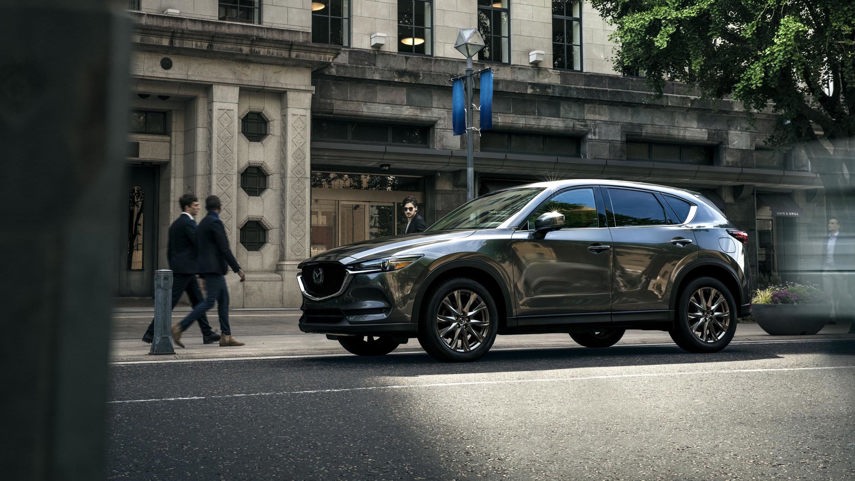
Mazda CX-5
As is usually the case with a Mazda, the CX-5 is the driver’s choice in the compact crossover class: underneath its upscale styling is a chassis that can handle fun roads nearly as well as pricier European compacts. In fact, we would bet that many people, if placed inside a CX-5 with no identifying marks, would mistake this impressive vehicle for a more expensive one thanks to its nicely done interior, refined powertrains, and a Signature trim that adds surprising upscale touches.
Speaking of powertrains, Mazda offers two: a 2.5L four-cylinder with 187 hp, and a turbo 2.5L with 250 hp and 320 lb-ft of torque. LED headlights, alloy wheels, and rain-sensing wipers are standard; top-end versions get Nappa leather, real wood trim, and a head-up display.
Prices start at $28,500 and run to $43,550 in a 2021-exclusive 100th Anniversary trim that truly is a luxury vehicle in every way but its name.
Read our review of the 2021 Mazda CX-5.
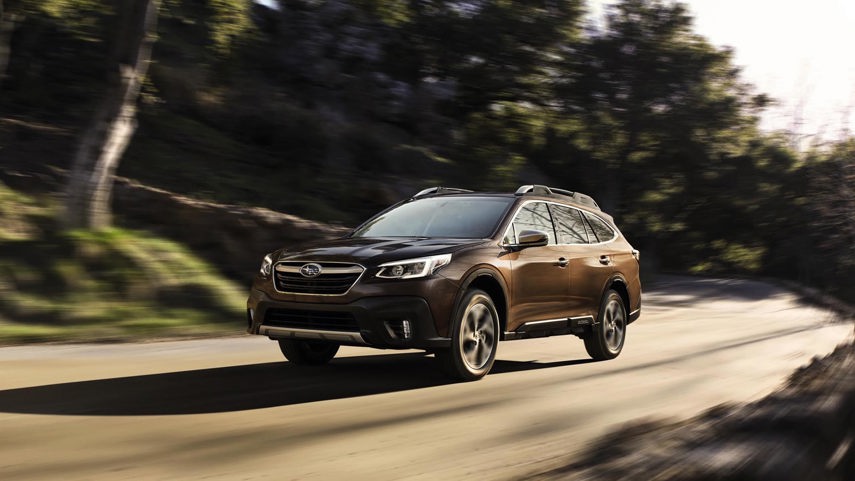
Subaru Outback
Most crossovers these days are related to car models, but the Outback is a perennial favourite around here for how honest it is about sharing its underpinnings with the Legacy sedan. Subaru redesigned the Outback in 2020, and it mostly carries over for 2021 with a roomy interior, smooth ride, and solid safety thanks to Subaru’s well-executed EyeSight system. If you use a roof rack, you’ll appreciate that the Outback’s station wagon-esque roofline is a little lower than that of many competitors.
The latest Outback offers the option of a turbocharged 2.4L engine (260 hp/277 lb-ft) that lends the car a more youthful feel than the base 182-hp mill, and an available 11.6-inch infotainment display is a modern touch that’s easy to appreciate. An Outdoor trim level brings a more sophisticated AWD system that boosts this car’s already strong all-weather cred.
Prices start at $30,695; Outdoor XT gets the turbo motor for $38,695, and Premier XT trim nearly touches $44,000.
Read our review of the 2020 Subaru Outback.
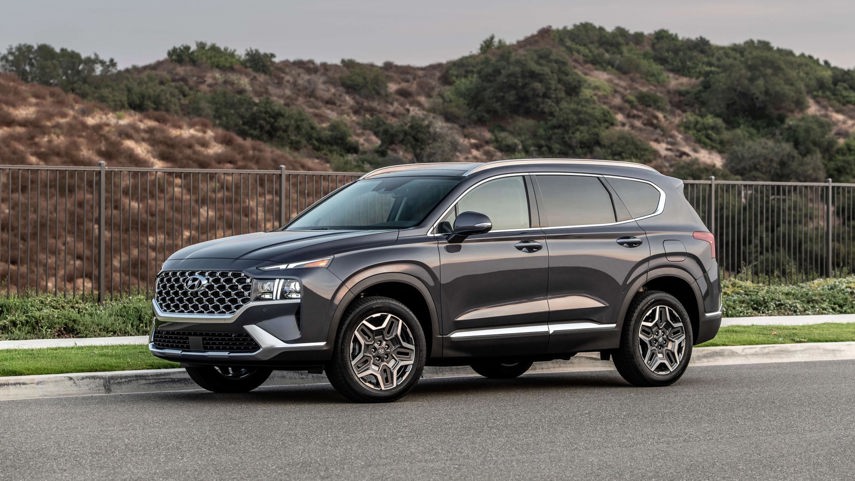
Hyundai Santa Fe
The 2021 Hyundai Santa Fe is an evolution of the fourth-generation model introduced in 2019; this year brings refreshed styling that gives this practical utility an upscale appearance backed up by a $47,499 Ultimate Calligraphy trim that bridges the gap to the Genesis luxury brand with Nappa leather and a remote parking system.
But the Santa Fe remains an impressive and accessible family-oriented crossover with the base Essential trim’s $31,399 starting price ($33,399 with AWD) and a 191-hp engine. That price includes heated seats and basic safety assists, while Preferred trim adds dual-zone A/C, blind spot warning, and passive keyless for well under $40,000.
If you want more power, Ultimate Calligraphy gets a 277-hp turbo motor, and if fuel economy is more your thing, get the Luxury Hybrid trim with its 178-hp gas-electric combo. No matter which version you choose, you’ll get a good-looking vehicle with a comfortable cabin and an easy-driving nature.
Read our review of the 2021 Hyundai Santa Fe Hybrid.
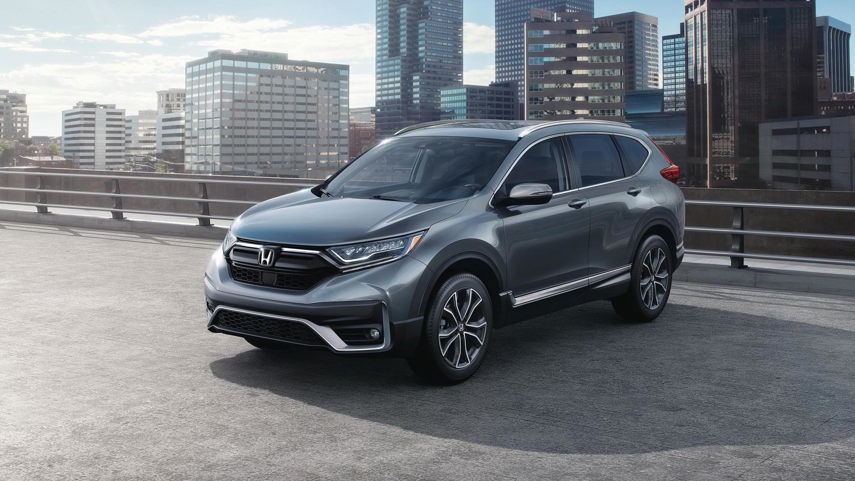
Honda CR-V
Honda’s CR-V is another front-runner in Canada’s compact crossover popularity contest. We’d argue the CR-V isn’t much to look at, but its odd proportions contain the practical interior that explains why this Honda is a family-driver favourite. There’s plenty of space, and an adjustable-height cargo floor adds flexibility.
The CR-V’s 190-hp 1.5L turbo engine and CVT deliver average performance, but it’s one of the most efficient non-hybrid powertrains in its class with or without AWD. The CR-V prioritizes practicality over performance, but it’s surprisingly rewarding to push through a quick corner.
A standard digital gauge cluster adds a high-tech feel, and every trim, from the $30,270 LX-2WD to the $43,870 Black Edition, gets standard collision avoidance tech, dual-zone automatic A/C, and passive keyless entry. Sport trim is the CR-V’s value sweet spot, with a heated steering wheel, power driver’s seat, fog lights, a power tailgate, 19-inch wheels, and a right-side blind spot camera.
Read our review of the 2020 Honda CR-V.
Best 3-Row/Full-Size SUVs
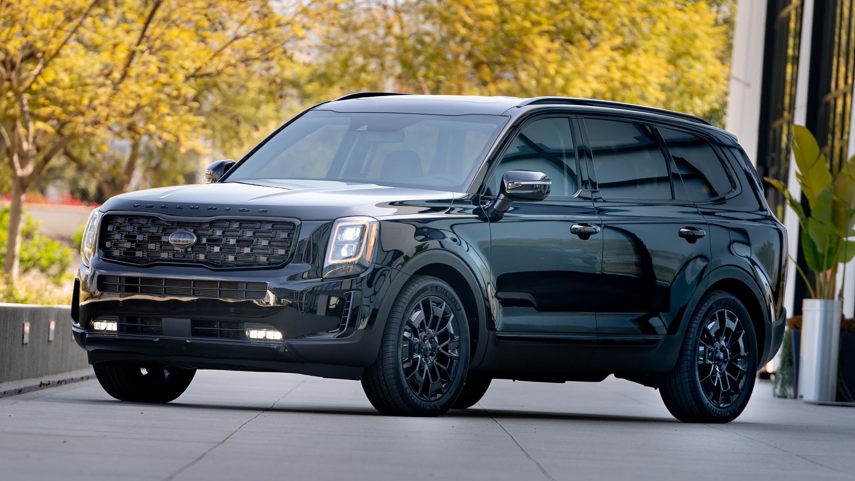
Kia Telluride
If it wasn’t already clear South Korea’s Kia was a brand worth paying attention to, the Telluride SUV has made sure everyone knows the company is to be taken seriously. This is a near-full-size utility with three standard rows of seating that aims to emulate some of the industry’s poshest luxury SUVs at a fraction of the price.
The $46,195 EX trim comes with a hands-free tailgate, heated steering wheel, three-zone climate control, woodgrain dash trim, and a 10.25-inch infotainment display – all items you have to pay extra for in some pricier models. And by the time you get to the $55,695 SX Limited Nightsky package, Kia has added in a self-levelling rear suspension, heated and cooled seats in the front and second rows, and a head-up display.
The Telluride backs up that value for money with an upscale cabin and driving feel. If anything gives away the Telluride’s underlying ordinariness, it’s a 291-hp V6 that is smooth but lacks the power available in pricier luxury SUVs.
Read our review of the 2021 Kia Telluride.
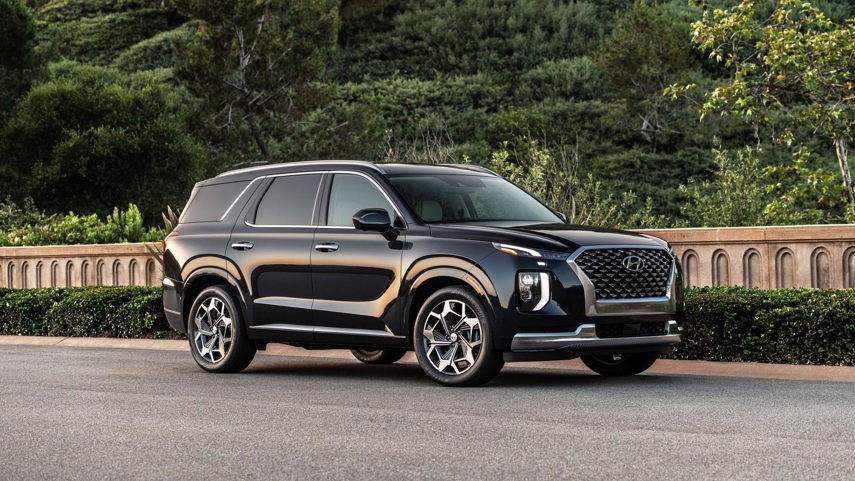
Hyundai Palisade
Hyundai’s flagship model is a structural and mechanical twin to the Kia Telluride, which explains how the two ended up being a one-two punch in this category. The Palisade’s aim is to provide some big-SUV functionality but with more efficient performance than a truck-based model.
Bold styling and a top Ultimate Calligraphy trim (a purposeful play on Land Rover’s Autobiography models) make you think you’re looking at a way more expensive vehicle. That top trim’s $54,699 price includes features that are options in the Range Rover the Palisade emulates, and its interior fit and finish is a reasonable imitation of the Rover, too.
A 291-hp 3.8L V6 provides adequate performance but reminds you this is no high-performance utility. Rather, it’s a comfortable, spacious, and well-equipped one designed to give you and your family a taste of the high life at an attainable $39,199 starting price.
Read our review of the 2021 Hyundai Palisade.
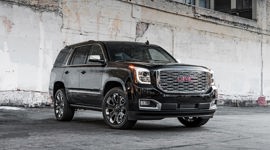
Chevrolet Tahoe/GMC Yukon
The Tahoe and Yukon are mainstays of the full-size SUV market for all the right reasons: these truck-based models – both of which were redesigned for 2021 – offer family SUV functionality with towing capability inherited from GM’s full-size pickups. There’s no getting around the fact that these are large vehicles, but the latest Tahoe and Yukon capitalize on that with usable third-row seating space. There’s a touchscreen, naturally, but GM still puts hard buttons on the dash for many common functions, enhancing user-friendliness.
GM’s redesign brings sharp styling and, perhaps more notably, an independent rear suspension that improves ride quality and is a good fit in the well-executed Yukon Denali and Tahoe High Country luxury packages. Base power is from a 355-hp V8 that upgrades to 420 hp in high-end trim levels; an optional diesel straight-six is a fuel-efficient ace up GM’s sleeve.
Prices start in the $57,000 range, while luxury versions come in around $81,000.
Read our review of the 2021 GMC Yukon.
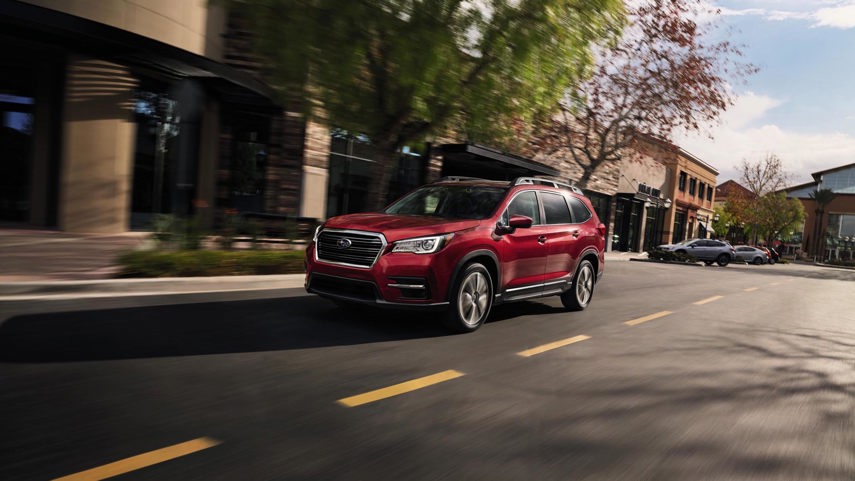
Subaru Ascent
Subaru began its latest foray into three-row SUV territory in 2019 with the Ascent. While our reviewers have criticized its generic appearance, buyers here don’t typically reward adventurous styling, so the look is a good fit for the segment. The Ascent has one of the segment’s roomier third rows, which can be configured to fit three people.
A 260-hp turbo four-cylinder engine provides decent performance, and Subaru’s excellent AWD system ensures sure-footed traction in suboptimal conditions. The Ascent favours comfort over sporty handling – another example of Subaru reading the room and designing a vehicle that does what buyers expect it to.
Convenience trim ($36,995) is a good value with heated front seats, three-zone A/C, the EyeSight safety assist suite and steering responsive headlights, and the next-up Touring gets passive keyless entry, a sunroof, and a larger infotainment display for $42,495. The trim walk ends with the $51,495 Premier, with ventilated seats and a front-view camera.
Read our review of the 2021 Subaru Ascent.
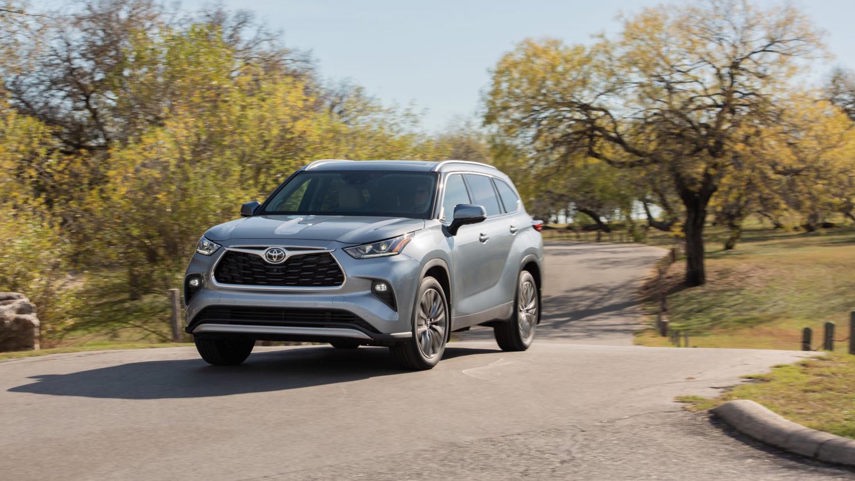
Toyota Highlander
These days, Toyota can’t stand out simply by building some of the most reliable vehicles; they have to look interesting, too. That’s why the fourth-gen Highlander, introduced in 2020, looks the way it does. Ultimately, though, not much has changed: the Highlander is a comfortable and competent family mover with a smooth ride and, if you opt for the hybrid powertrain, excellent fuel economy.
For this redesign to make the most sense, think of it as a big two-row SUV with an occasional-use third row. Toyota’s redraw means top-trim Limited versions do a better imitation of a Lexus thanks to a big touchscreen, saddle-coloured leather, and a broad dash with plenty of small-item storage.
Gas models get a 3.5L V6 with 295 hp, and the hybrid pairs a 2.5L I4 with electric motors for 243 hp. Only the entry-grade L trim is FWD ($40,450); AWD is standard from LE ($43,950) to Limited Hybrid ($54,150) regardless of powertrain.
Read our review of the 2020 Toyota Highlander.
Read our review of the 2020 Toyota Highlander Hybrid.
Best Luxury Subcompact SUV
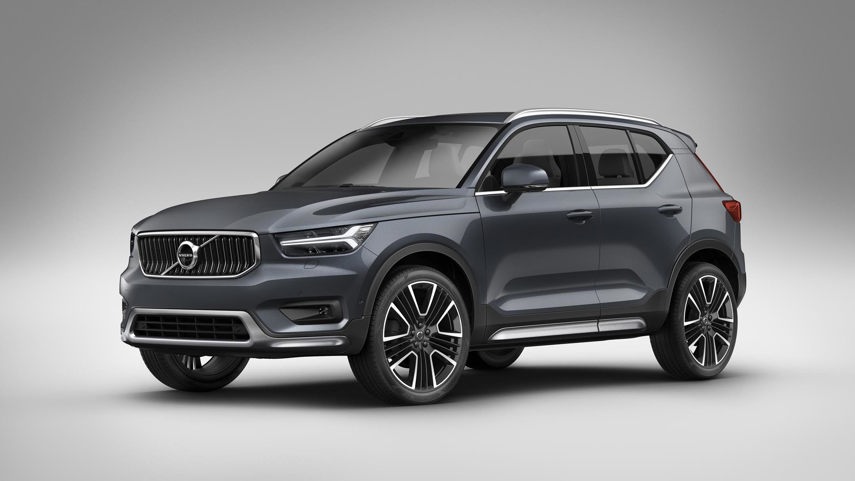
Volvo XC40
The Volvo XC40 has won an AutoTrader.ca Award every year since its 2019 introduction, and for good reason. Volvo did a difficult thing in designing the XC40 to look interesting without sacrificing function for form. The visual interest is in details like the contrasting roof, which creates the illusion of a sleeker shape. So the XC40 doesn’t look tall, but it is, and that allows for good space for four adults.
Turbocharged torque makes the 2.0L four-cylinder feel stronger than it is, and the standard AWD system is as good at providing sure-footed grip as letting an enthusiastic driver enjoy some four-wheeled wintertime fun.
The XC40 is a rare example of an affordable vehicle whose chassis and powertrain are so well matched. Pricing starts at $39,950 for the 187-hp T4 powertrain, but the 248-hp T5 ($42,800–$49,250) is the better performance deal. And then there’s the $64,950, all-electric XC40 Recharge, which boasts 402 hp.
Read our review of the 2020 Volvo XC40.
Read our review of the 2021 Volvo XC40 Recharge.
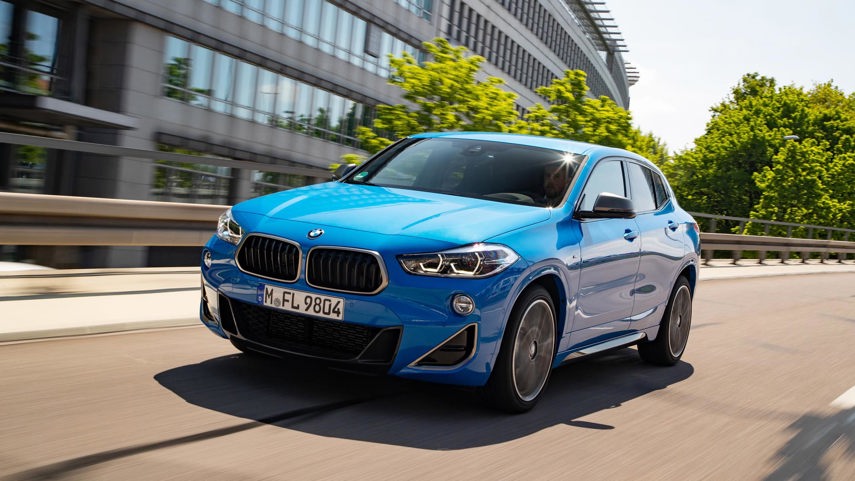
BMW X2
Luxury brands have expanded their ranges downward in recent years in a bid to cultivate a younger audience. Combine that strategy with the industry’s love for SUVs and crossovers and you get something like the BMW X2, the brand’s smallest crossover model. Like so many of its ilk, the X2’s cool looks are only a half-step removed from a small hatchback – it’s related to the Mini Clubman, as well as the 1 Series hatch sold elsewhere, and it offers the kind of nimble, entertaining drive those cars are known for.
A 2.0L turbo I4 makes 228 hp or 302 hp depending on trim, and both feel like they belong in a BMW; AWD and an eight-speed auto are standard either way. But despite its fun dynamics, the X2 is a comfortable daily driver that promises decent fuel economy.
You have to pay to play – pricing starts at $43,275 and nearly touches $50,000 with the bigger engine – but we think the X2 is worth it.
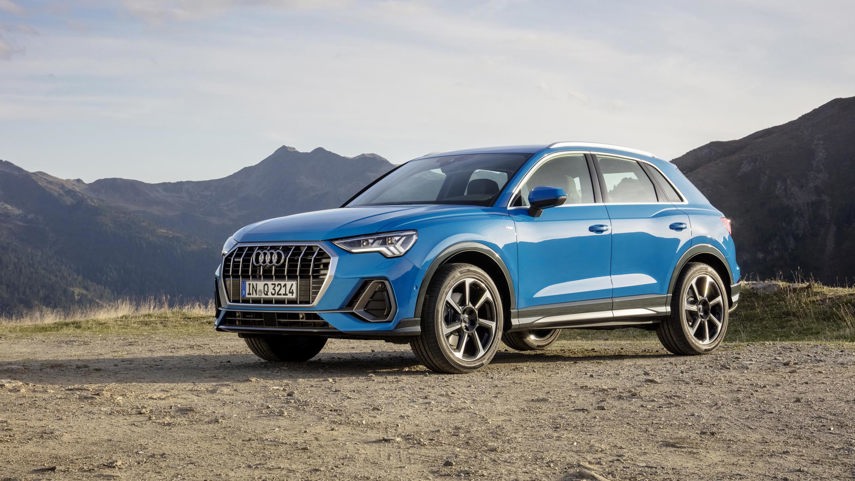
Audi Q3
Getting creative with an SUV’s design can be touchy business. Go too aggressive and you risk compromising practicality, but by the same token many shoppers in the upscale sphere are looking for style to go with their substance. Audi’s solution was to put the Q3’s design flair in its details, like a distinctive grille and head- and taillights that look like works of art when they’re lit up.
A 2.0L turbo four-cylinder makes your choice of 184 hp or 228 hp. Audi’s turbocharging expertise means either one is a good fit with the Q3’s well-sorted chassis, which drives even smaller than the car looks thanks to a wide track. Audi is known for high-quality interior design, and it didn’t skimp here despite the Q3’s $37,250 starting price.
A big touchscreen is well integrated into the stylish dash, and a digital gauge cluster is included in the top Technik trim for a reasonable $46,350.
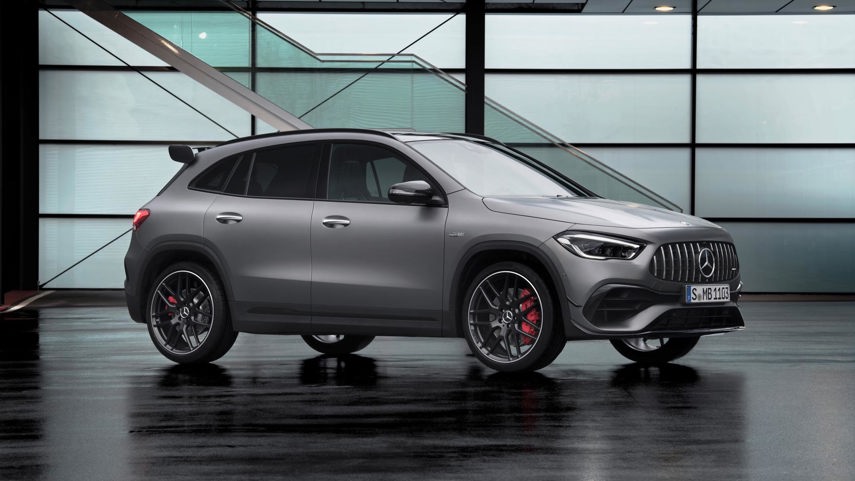
Mercedes-Benz GLA-Class
The 2021 model year brings a redesigned Mercedes-Benz GLA-Class that keeps what was good about the first-gen model and adds more of what was missing. The GLA adopts a more conventional look for 2021, including a taller roofline. It’s less distinctive, but it adds a lot of interior space, especially in the rear seat where the previous GLA was cramped. If the exterior is plainer, there’s plenty to keep your attention inside, like neat-looking round air vents and a pair of digital displays housed in a binnacle that stretches half the width of the dash.
Benz offers more powertrain variety than most brands in this class with three versions of the company’s 2.0L turbo I4 with 221 hp, 302 hp, or 382 hp, all of which come with AWD and an eight-speed auto. A pair of AMG models amp up the GLA’s already sharp handling; our only criticism is a firm ride.
Base prices range from $42,400 to $60,500.
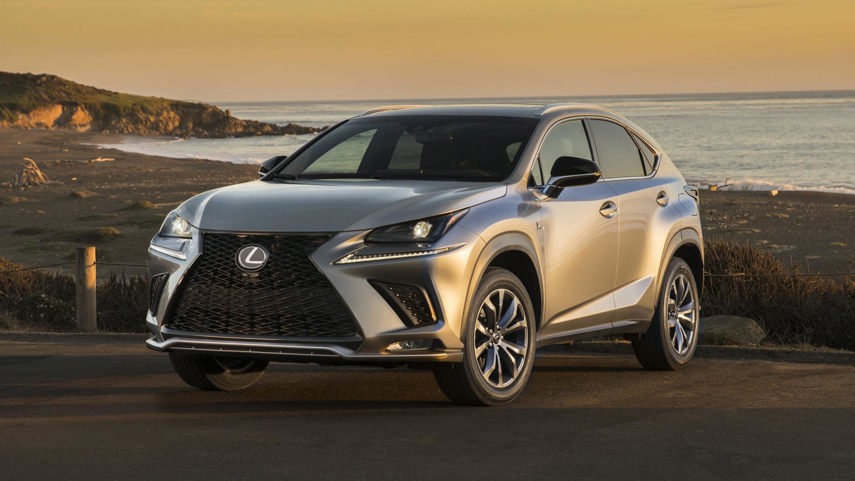
Lexus NX
Like its Toyota parent company, Lexus decided that being known for reliability was not enough, so it went all in on making its models, including the NX small SUV, stand out looks-wise. It certainly succeeded, but we’ll leave you to decide whether you like the result. Instead, we’ll focus on what the NX does really well: get you places in comfort and with minimal fuss.
The NX’s powertrains are high points. The NX 300 gets 235 hp from a smooth, torquey turbo four-cylinder, and the NX 300h is a 194-hp gas-electric hybrid that delivers some of the best fuel economy in the class. Neither version is particularly entertaining to drive, but the chassis delivers competent, confidence-inspiring handling along with plenty of refinement and AWD traction; the NX comes standard with collision avoidance assists, too. Lexus’s cabin materials look and feel good, and there is useful – if not class-leading – space for four inside.
Base prices are $44,600 for the NX 300, and $47,100 for the NX 300h.
Read our review of the 2021 Lexus NX.
Best Luxury 2-Row/Compact SUV
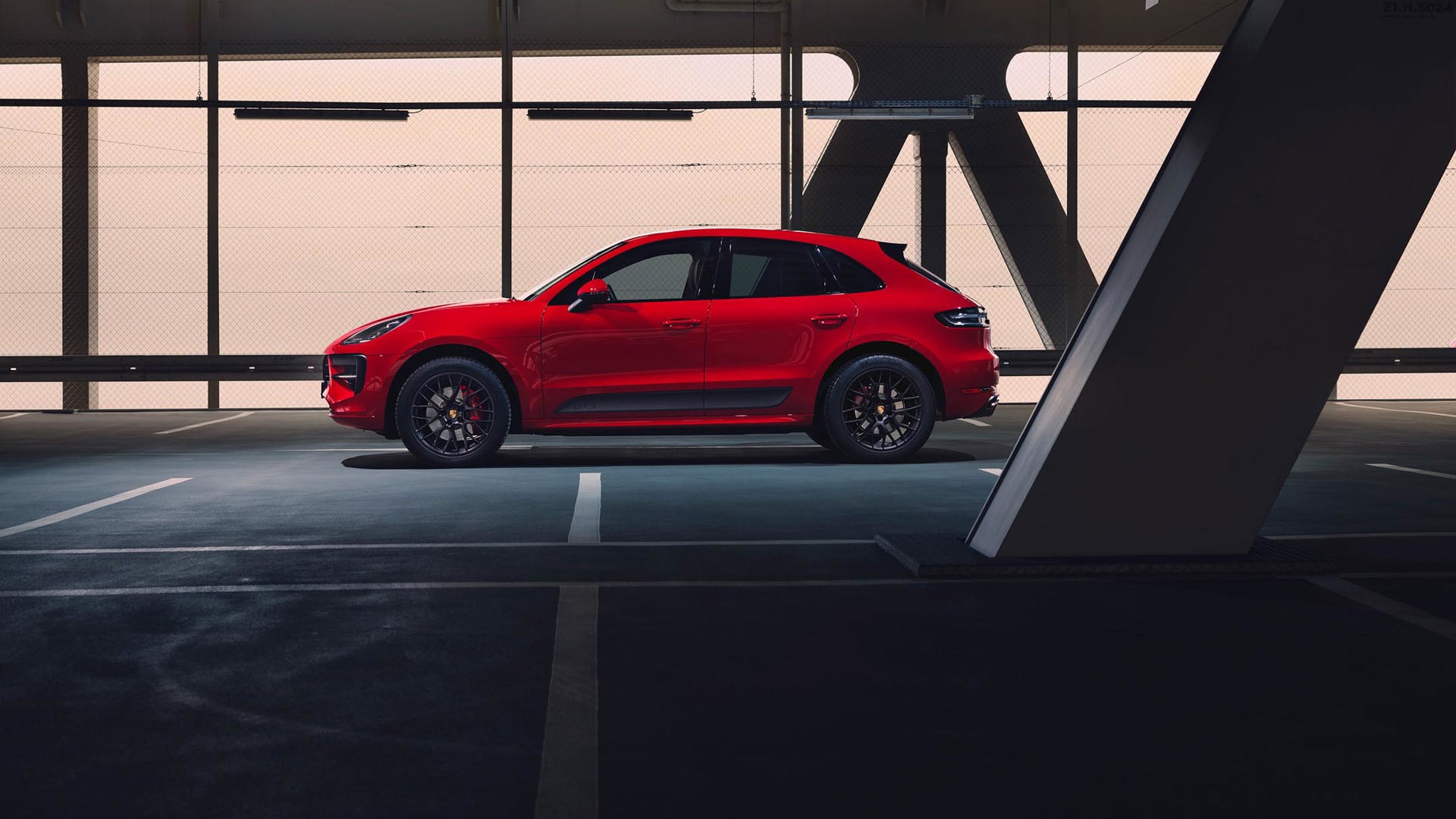
Porsche Macan
If you want a sports car disguised as a compact SUV, look no further than the Porsche Macan. The Macan is infused with the spirit of the 911 sports car and combines truly great handling with enough practicality to suit a small family or a couple who wants to take a friend or two along for the ride. Not for nothing, the Macan is also one of the better-looking small luxury crossovers available today. Inside, you could be at the wheel of almost any Porsche model thanks to supportive seats, a tach-centric gauge cluster, and the broad centre console lined with buttons.
The line starts with a base model using a turbo four-cylinder (248 hp), but S, GTS, and Turbo trims all get V6s good for 348 hp, 375 hp, and 434 hp, respectively. Porsche’s excellent seven-speed PDK gearbox puts that power to standard AWD.
Pricing starts at $57,800 and ends up at $96,500 for the speedy Turbo.
Read our review of the 2021 Porsche Macan.
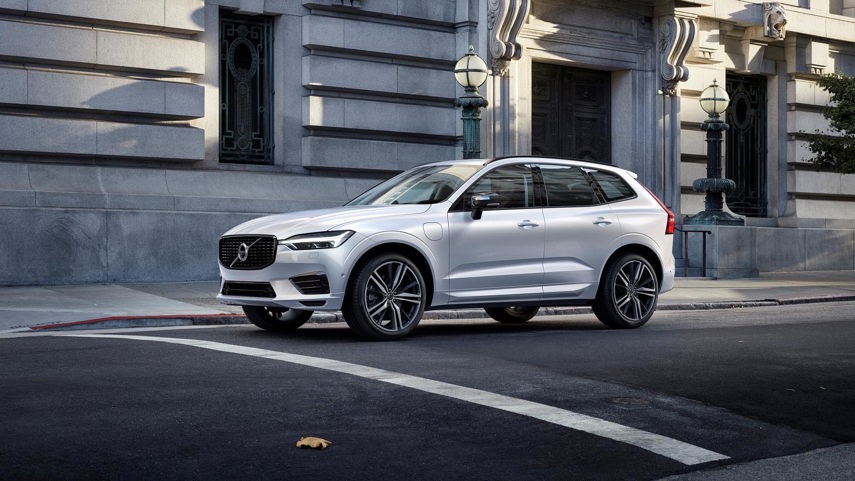
Volvo XC60
As one of our reviewers put it, “anybody who tells you that all crossovers look the same needs to spend some time with the (Volvo) XC60.” This is one of the more handsome choices in the compact luxury crossover class – and you won’t mistake it for the brand’s larger or smaller SUV models despite sharing key styling traits.
Viewed in profile, the XC60 looks ready to pounce – which it can do, especially when equipped with the T8 plug-in powertrain ($66,650) and its 400 hp and 472 lb-ft of torque. Don’t need that much power? Choose the T5’s 250 hp (for $48,500) or the T6 with 316 hp, priced starting at $52,000.
Any way you slice it, you get smooth torque and capable AWD. The XC60’s front seats are some of the best in this class, making this an easy choice as a road trip machine. And in the T8, you’ll be able to do most city driving on electricity alone.
Read our review of the 2020 Volvo XC60.
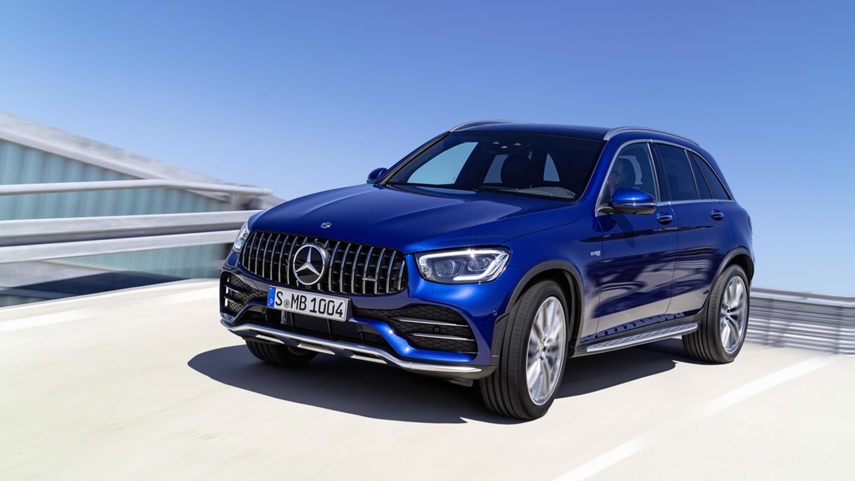
Mercedes-Benz GLC-Class
There is a certain prestige that comes with Mercedes-Benz’s three-pointed-star logo, even when it’s attached to a compact crossover priced at just under $50,000. The GLC is a good-looking vehicle no matter how you option it, but enter AMG territory and Mercedes dresses its compact utility up the same way it does its sportiest sedans, with unique grille treatments and big wheels. An available augmented reality nav system takes the guesswork out of getting around, and the MBUX infotainment system responds to all sorts of voice commands.
A comfortable ride comes with the GLC 300’s 255 hp; move up the ladder to AMG 43 and V8-powered AMG 63 models (385 hp and 503 hp) for a firmer ride and sports car moves – but know that the AMG 63 is not cheap, at $94,900. Regardless of engine choice, you get a practical, spacious interior in a well-done daily driver. If you favour style over space, choose the sleeker coupe body style.
Read our review of the 2020 Mercedes-Benz GLC-Class.
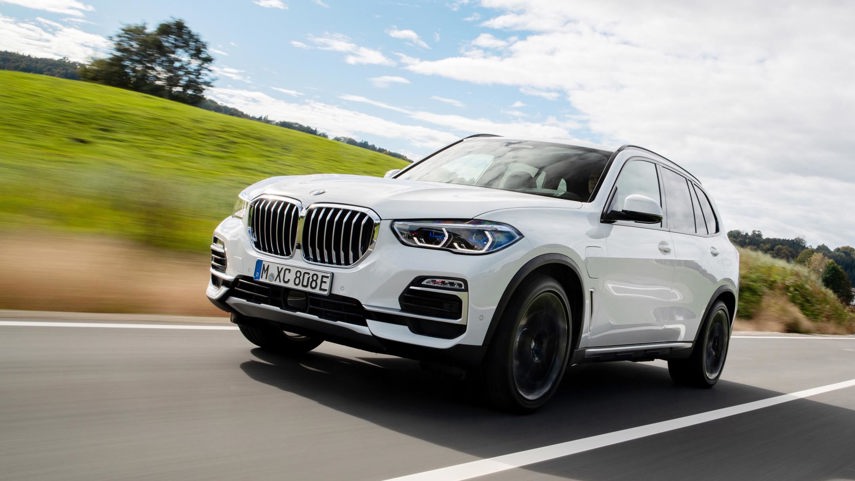
BMW X5/X6
The future is now, if BMW’s X5 and X6 mid-size crossovers are any indication. Laser headlights, plug-in powertrains, and a stereo you can control with hand gestures are just a few of the high-tech items that help set these Bavarians apart in a crowded category.
The X5 and X6 are engaging to drive, with handling that belies their bulk. And there are four torquey turbo powertrains to choose from: a 335-hp inline-six that you can option with electricity and plug-in charging for 389 hp; and a 4.4L V8 with 523 hp or 600 hp.
As one of our reviewers described the wild X5 M and X6 M, “you don’t need this car, but after driving it, you’re going to want this car.” That’s especially true if you like long drives, to which the comfortable, supportive seats are well suited. The X5 is even good for picnic lunches thanks to a two-piece tailgate that doubles as a bench.
Read our review of the 2021 BMW X5.
Read our review of the 2020 BMW X6.
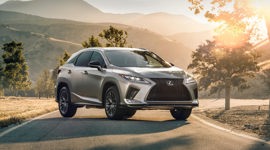
Lexus RX
There’s a clear division in the mid-size luxury crossover class between models that emphasize sporty performance and relaxed transportation, and the Lexus RX falls squarely in the latter category. Lexus offers no high-performance power options and doesn’t test the RX on a racetrack to validate its handling credentials. Instead, the RX is a smooth, quiet cruiser with comfortable, spacious seats for four – including great rear-seat legroom – and useful (if not class-leading) cargo space. Need more seating? Opt for the RX L and its two-place third row.
The RX’s power is not breathtaking, but a standard 3.5L V6 delivers 290 hp in a smooth, linear fashion, and the RX 450h hybrid delivers great economy and a bit more power. Most driver safety assists are included for the $56,650 starting price, which tops out at $76,700 for a seven-seat hybrid model.
Read our review of the 2021 Lexus RX.
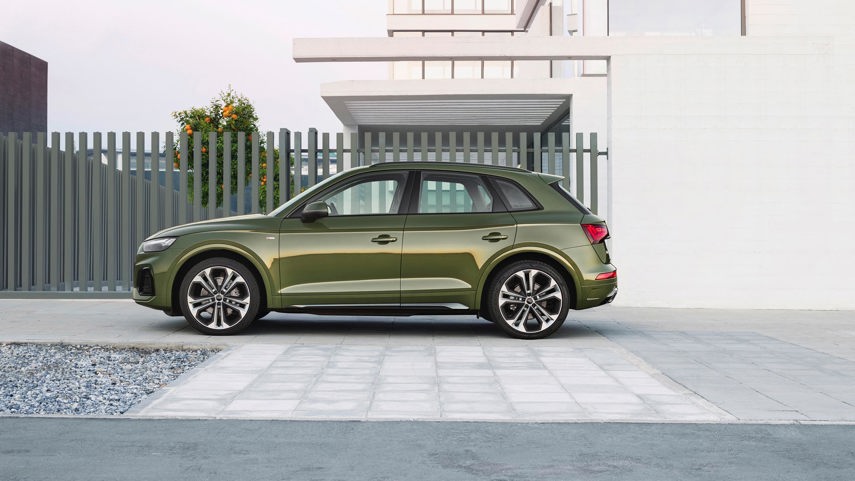
Audi Q5
Many of today’s luxury brands design vehicles for maximum visual impact in the increasingly crowded upscale marketplace. Audi, however, has stuck with a refreshingly understated styling language that, in our opinion, will age better than most. That applies nicely to the Q5 compact crossover, which gets a tasteful update for 2021. As with most Audi models, the Q5’s interior is a highlight thanks to high-quality materials and well-done digital interfaces.
Power-wise, base 45 models get a 2.0L turbo with mild-hybrid assist for 261 hp, a 55 designation refers to a 362-hp PHEV setup, and in the SQ5 you get similar power from a 3.0L V6 and a tauter chassis for sharper handling. There’s no hardcore speed machine on offer like BMW’s M and Mercedes’s AMG variants, but you still get a fun drive without paying for power you can’t use on North American roads.
Audi Q5 prices range from $46,550 to $73,100.
Best Luxury 3-Row/Full-Sized SUV
Genesis GV80
Like just about every vehicle the Hyundai Motor Group launches these days, Genesis’s first SUV model is a fantastic debut. It starts with distinctive styling that sets the GV80 apart in today’s vast luxury crossover marketplace and a “decadent” interior, as one reviewer described it, that’s loaded with “proper premium features” like a massive touchscreen and available quilted leather seats with massage.
We could go on, but suffice it to say that for its $85,000 top price, the Genesis GV80 is loaded with stuff that normally adds up to a six-figure dollar amount in this class. Even the base model looks and feels a lot pricier than its $64,500 starting point. For that money, you get a 300-hp 2.5L turbo four-cylinder engine, but the real star is a 3.5L turbo V6 that delivers a smooth 375 hp, albeit without the urgency you get in some German models. Still, as an overall package, the GV80 is an impressive piece, especially for a newcomer.
Read our review of the 2021 Genesis GV80.
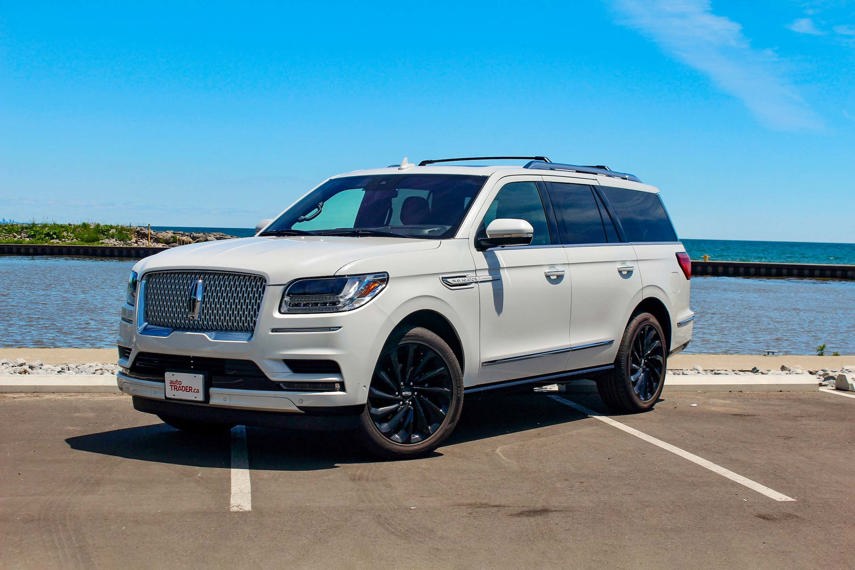
Lincoln Navigator
The Lincoln Navigator has come a long way since it helped create the full-size luxury SUV class in the late 1990s. It’s still ostentatious and huge and drives like an old-school luxury barge, but today’s Navigator is in most ways a thoroughly modern vehicle with a fully independent suspension and a turbocharged V6 cranking out V8-like power figures of 450 hp and 510 lb-ft of torque. That power translates into quick acceleration or, if you want to take advantage of the Navi’s truck-based platform, a towing capacity of nearly 3,800 kg.
Seating is for seven or eight in standard leather, and the third row is roomy enough for adults to be comfortable. Need more space? Choose the Navigator L for a stretched wheelbase and a longer body with more cargo capacity. Almost any of the Navi’s options pushes its price above $100,000, but practicality-wise it’s still a better value than any comparable European model.
Read our review of the 2020 Lincoln Navigator.
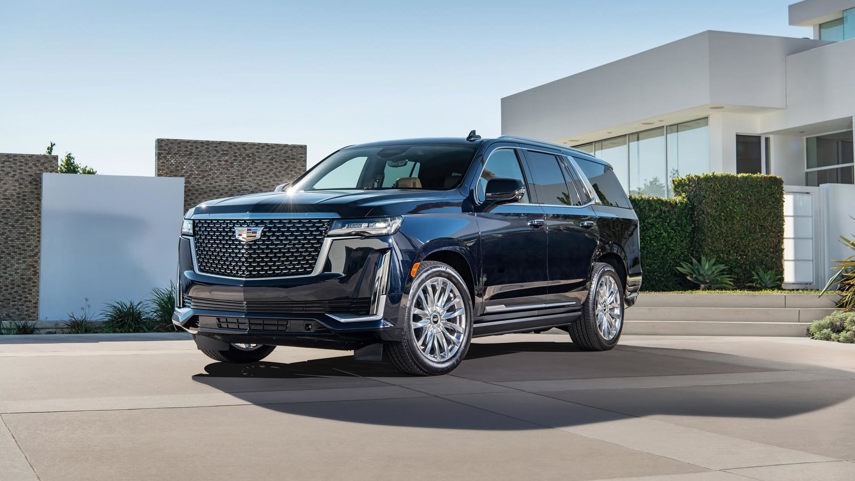
Cadillac Escalade
Cadillac and its Escalade have been in the full-size luxury SUV category for more than two decades, but it’s only recently the Escalade has moved into the modern age with its 2021 redesign. While this SUV’s shape is conventional, it boasts edgy details that lend a sophisticated, Euro-inspired look. Inside, the driver gets a cockpit-like seat facing two well-done organic LED displays. From any angle, inside and out, the Escalade looks expensive – which is good, because it is (at $90,398 to start), despite being a decent value for what it is and can do.
Among its capabilities is a nearly 3,600-kg towing limit (thanks to a platform shared with pickup trucks) and a third row that’s comfortable for adults. If the base Escalade isn’t roomy enough, there’s a longer ESV version with more legroom and cargo space. While standard power is from a very American 420-hp V8, a new-for-2021 inline-six turbodiesel matches the V8’s torque while promising better fuel economy.
Read our review of the 2021 Cadillac Escalade.
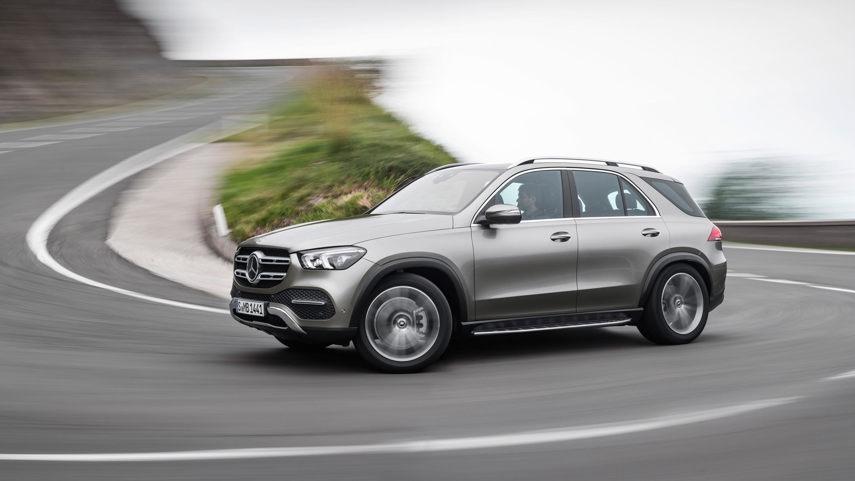
Mercedes-Benz GLE-Class
The GLE-Class is the middle sibling in Mercedes-Benz’s SUV lineup – larger than the GLC, smaller than the GLS, and less bling-tastic than the G-Class. Which is not to say the GLE can’t bring the bling: the standard body style is the usual tall, boxy affair, but AMG versions get plenty of fashion flair; meanwhile, the sleeker GLE coupe somehow looks more imposing despite its lower roofline. Inside, information is served up on two beautifully rendered digital displays that respond to a litany of voice commands, and seating delivers nearly flawless comfort for long-haul driving.
Base power is 255 hp from a ho-hum four-cylinder, but a mild-hybrid turbo six makes as much as 429 hp, and a gas-electric V8 delivers 603 hp and accelerates on a wave of torque. Prices range from $69,900 to $135,300.
Read our review of the 2020 Mercedes-Benz GLE-Class.
Read our review of the 2021 Mercedes-Benz GLE Coupe.
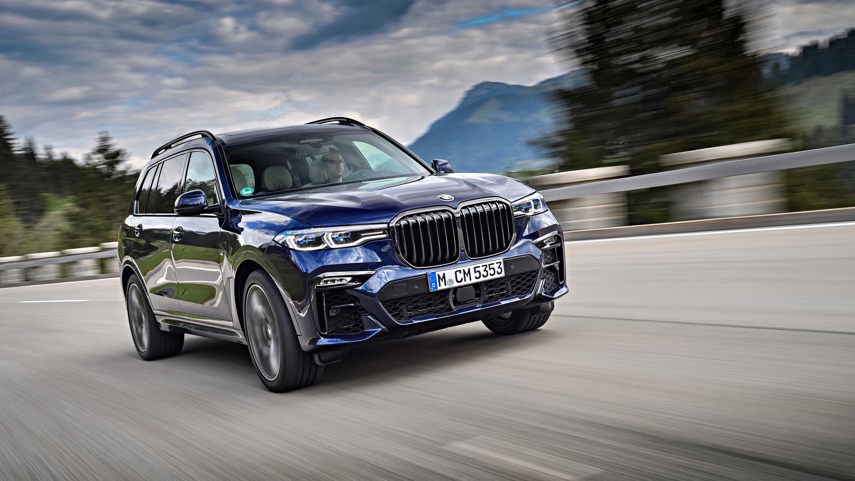
BMW X7
The X7 is BMW’s first purpose-built seven-seat SUV and the brand’s most luxurious utility model. Angular styling masks the X7’s size, making it easy to mix up this big ute with the more svelte X5. Make no mistake, though – the X7 is serious about its mission, offering up generous interior space with a third row large enough for adults. Comfort is augmented by a five-zone A/C system and cushy, supportive seats that remind you this is the SUV analogue of BMW’s 7 Series executive sedan. An air suspension provides a cushy ride and nicely mitigates body roll in corners. Stow the third row and cargo space is generous inside a neat-o split tailgate; loading is eased by a switch that drops the suspension for a lower cargo floor.
The $95,800 base model has a turbo six that feels stronger than its 335-hp rating; there are two V8s with 523 hp and 612 hp, the latter figure belonging to the full-zoot, $165,900 Alpina version.
Read our review of the 2020 BMW X7.
Top 10 SUVs and Crossovers with the Highest Overall Scores, Regardless of Segment
These 10 SUVs and crossovers got the highest scores from our panel of experts during their evaluations for the AutoTrader.ca Awards, meaning these models are especially impressive.
Volvo XC40
A repeat winner in our awards, the XC40 was this year’s top vote-getter for so many reasons. It’s both functional and attractive, offers fun performance in year-round driving with capable AWD and a choice of a turbo engine (187 or 248 hp) or an all-electric T8 powertrain whose 402 hp makes for a very quick and quiet small SUV. Pricing starts just under $40,000 – a good deal in this class – and tops out at $64,950 for the T8 EV.
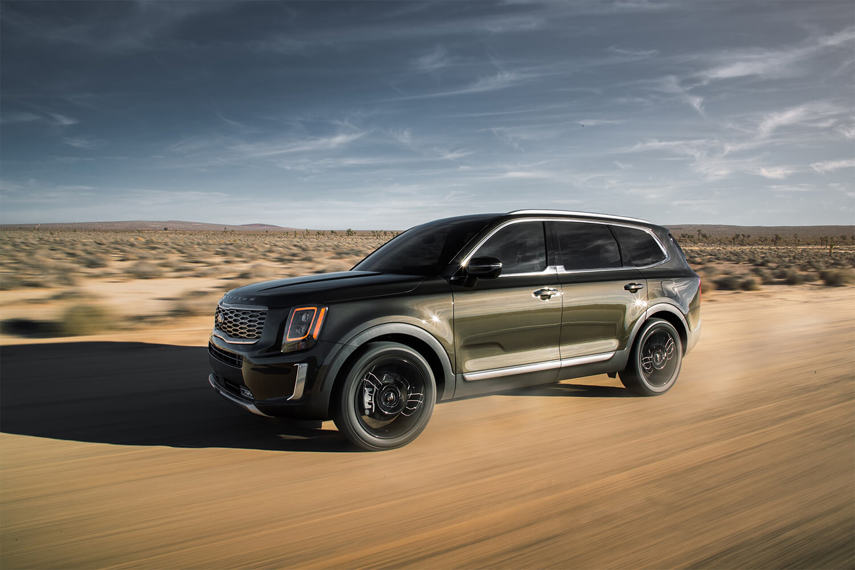
Kia Telluride
Kia doesn’t have a lot of experience building big vehicles, but you’d never know it based on the Telluride, a near-full-size SUV that placed second in overall voting thanks to its luxury feel and mainstream price. At $46,195, the base model includes features that cost extra in more expensive vehicles, while the top $55,695 version is a full-on upscale cruiser. All that’s missing is the option of big power; the 291-hp V6 feels a bit ordinary compared to the rest of the package.
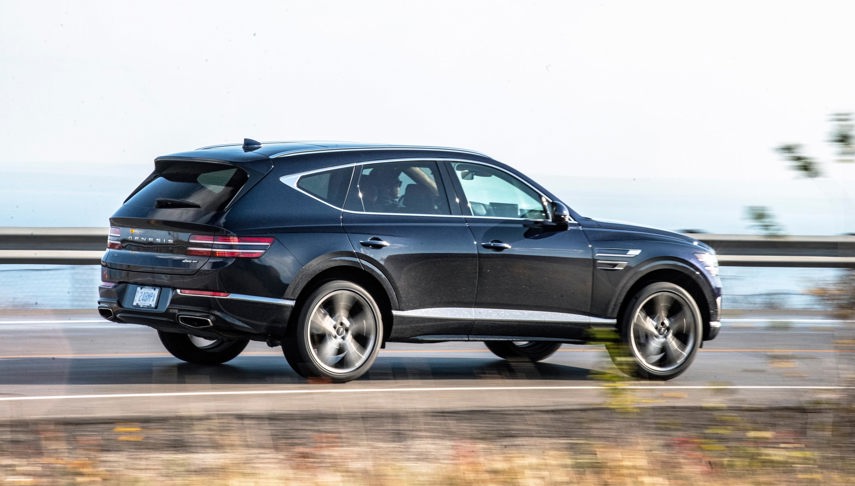
Genesis GV80
Genesis crashes the luxury SUV party with its first crack at the category, the GV80. It’s imposing and distinctive outside and decadent inside while undercutting its competition on price, as is the South Korean auto industry’s way: the $85,000 top trim comes with features that add up to six figures in many comparable European models. Base models have 300 hp from a turbo four-cylinder, while a turbo 3.5L V6 makes an impressive 375 hp.
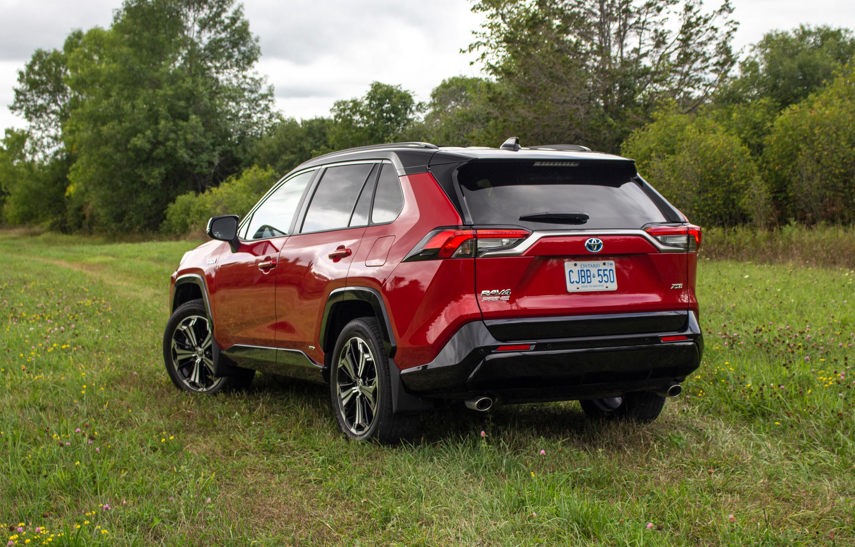
Toyota RAV4
We’d have been surprised were the RAV4 not among our top-10 highest-voted models. This compact crossover is not exciting, but it gets the job done. It’s roomy and practical, it’s priced to start under $30,000, and it’s made in Canada. A Trail trim gets a robust tow rating; the conventional hybrid model is a star for its smooth efficiency; and a 302-hp plug-in Prime model provides some EV driving for $44,990.
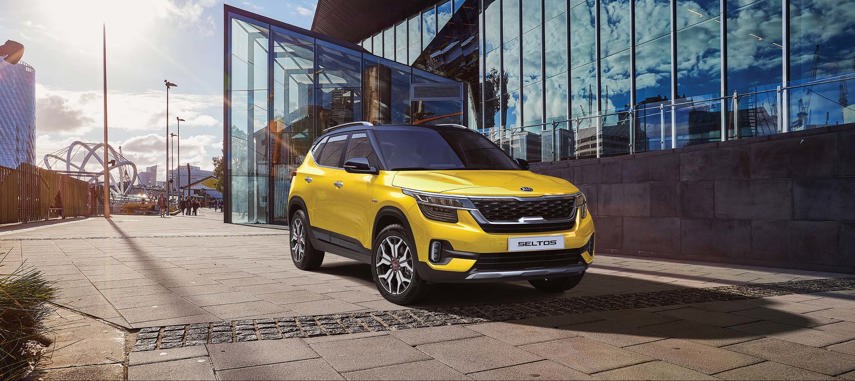
Kia Seltos
The Kia Seltos is a modest offering, but a significant one, catering to the fast-growing subcompact SUV market with a smooth powertrain, a usefully roomy interior, and simple styling that we think will age well. A 175-hp turbo motor promises performance, but the base 146-hp option comes with accurate steering and a pleasant driving feel. Naturally, prices are attractive: $23,095 gets you most safety assists, and $32,695 includes a head-up display and a nice stereo.
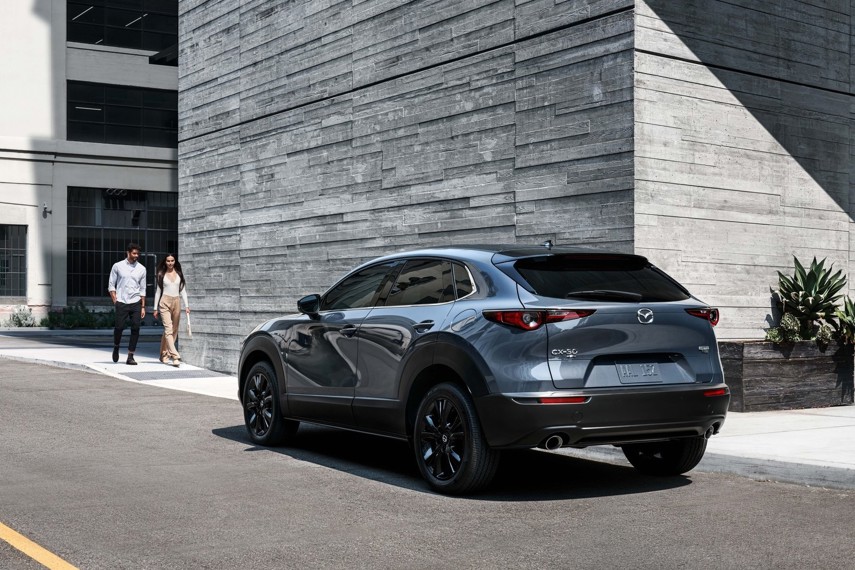
Mazda CX-30
Many Mazda models are perennial favourites among our reviewers for their entertaining driving feel. That explains the impressive vote tally for the CX-30, a subcompact crossover that prioritizes fun performance and upscale fit and finish over family-sized space. The result is a utility that feels more expensive than its $24,550–$36,250 price range – especially with the 250-hp turbo motor that comes with that top price. If you aspire to own a premium vehicle but can’t stomach premium-brand pricing, put the CX-30 on your test drive list.
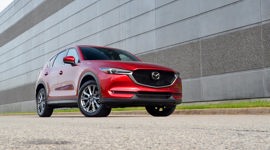
Mazda CX-5
Mazda is keen to capitalize on the popularity of small, upscale crossovers and we think it has what it takes to do so in the CX-5 compact. At $28,500 to $43,550, it’s priced to compete with mainstream models but can be equipped like a legit luxury car for way less than you’d expect. And no matter what you spend, you’ll get a vehicle that looks pricier than it is. All CX-5s use a 2.5L engine (186 hp in base form, and 250 hp with an optional turbo) and boast handling that can keep up with European rivals.
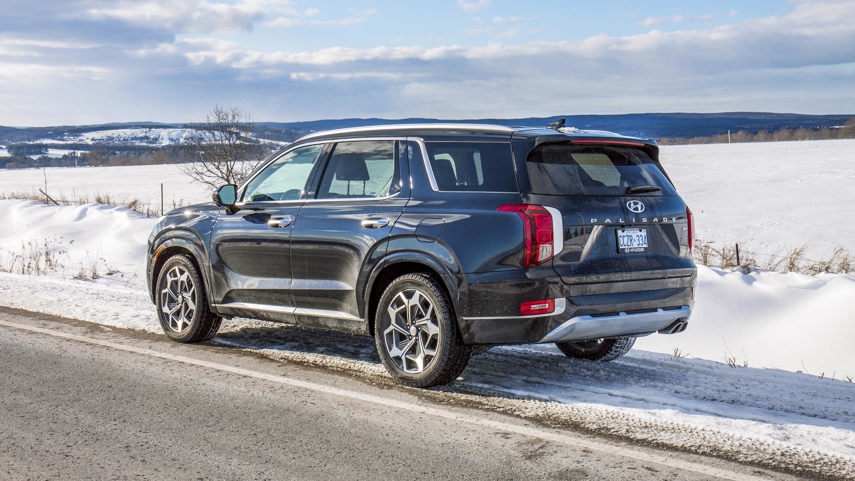
Hyundai Palisade
With the Palisade, Hyundai aims to provide big-SUV practicality with more efficiency than most vehicles this size can offer. Performance is modest at 291 hp, but in-your-face styling is a preview of the Palisade’s well-done interior, which is downright posh in the top $54,699 Ultimate Calligraphy trim. Our voters think even the $39,199 base model will give your family a taste of the good life along with a spacious three-row interior.
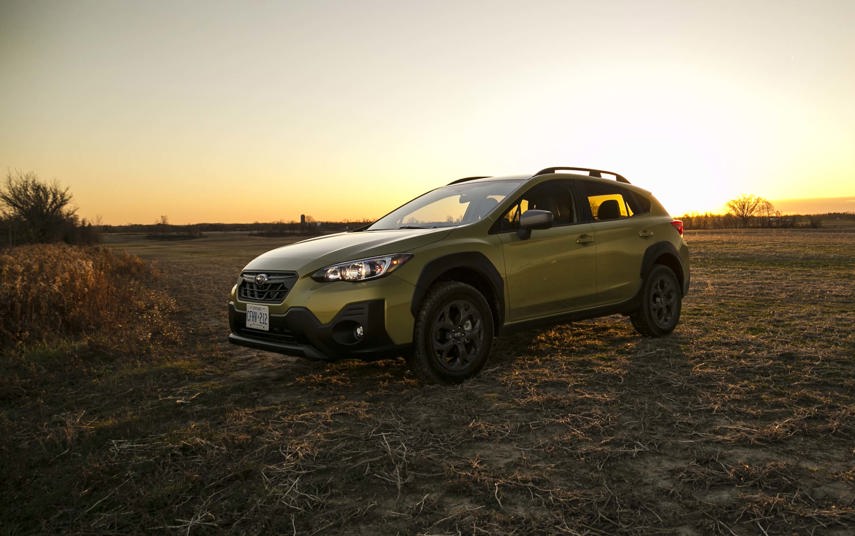
Subaru Crosstrek
Subaru was one of the first brands to test the market for subcompact crossovers, and the Crosstrek remains a segment favourite among buyers and our reviewers. A capable AWD system and generous ground clearance make this little vehicle great in the snow and lend it some off-road cred. New for 2021 is a 182-hp engine that corrects the base model’s power deficit; that said, the lesser 152-hp motor is one of few in this class you can get with a stick-shift. Pricing goes from $23,795 to $34,495.
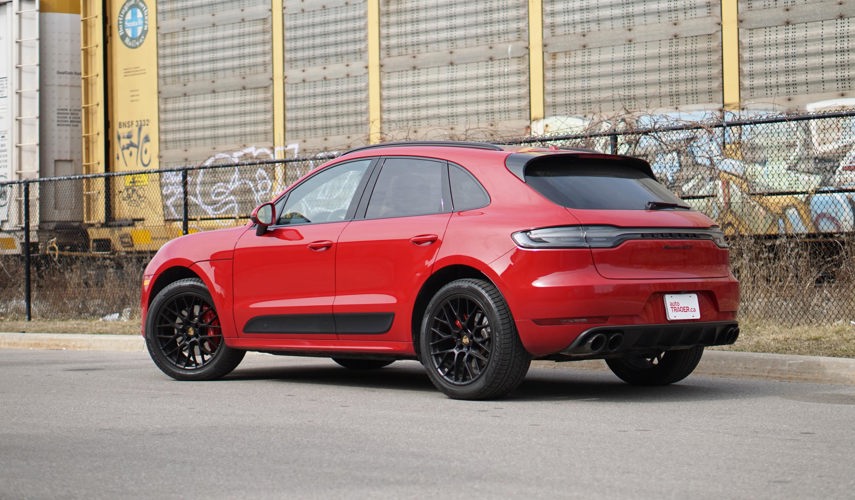
Porsche Macan
Rounding out our top-10 SUV vote-getters is the Porsche Macan, a sports car disguised as a compact utility vehicle. It may have four doors and a useful trunk, but the Macan is infused with the spirit of the iconic 911, which comes through in great looks, supportive seats, track-worthy handling and a race-inspired dual-clutch transmission. There are four power options from 248 to 434 hp, all of which are standard with AWD for year-round traction. At $57,800, the base model is Porsche’s cheapest model, while the top-trim Turbo goes for $96,500.
To learn more about the AutoTrader.ca Awards, see all of our 2021 winners here.
